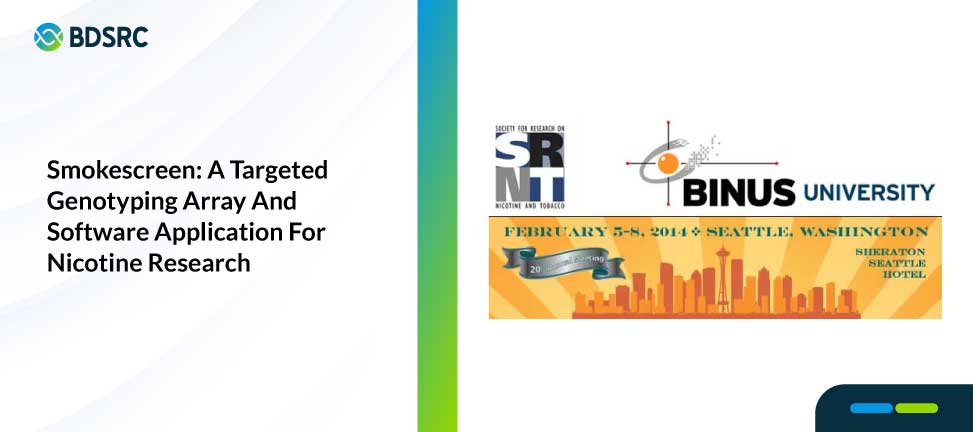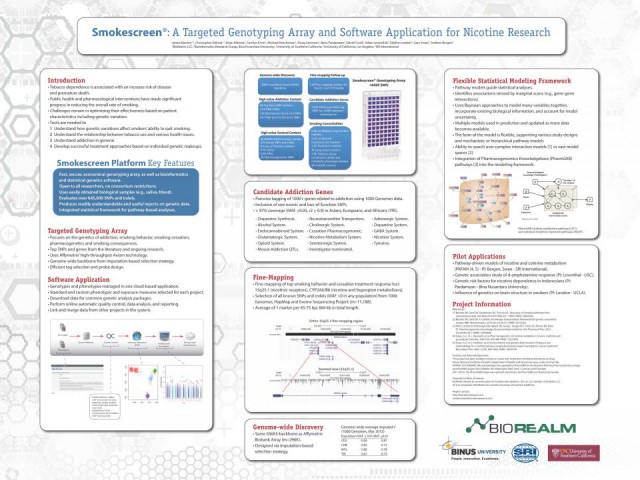Smokescreen: A Targeted Genotyping Array And Software Application For Nicotine Research

Authors and Affiliation:
James Baurey*, Christopher Edlund, Brian Malone, Carolyn Ervin, Michael Hutchinson, BioRealm; Bens Pardamean, Bina Nusantara University; Gary Swan, Andrew Bergen, SRI International
Abstract:
Tobacco dependence is associated with increase risk of disease and premature death. While public health and pharmacological interventions have made good progress in reducing the overall rate of smoking, challenges remain in optimizing their effectiveness based on patient characteristics including genetic variation. In order to maximize collaborative efforts to advance tobacco research, we have developed a solution called Smokescreen consisting of two major components – a targeted genotyping array and a centralized software application. We present the design of our array, which includes multi-population coverage of 1,015 genomic regions associated with addiction, as well as biological pathways related to the metabolism of nicotine and the brain’s reward system. The Smokescreen genotyping array includes a genome-wide core (296,038 SNPs); loss of function and exonic SNPs in the selected genomic regions (44,274); pharmacogenomics SNPs (2,031); eQTLs (5,870); ancestry informative markers (5,419); replicated genome-wide association studies findings (5,669); fine mapping of chr15q25, CYP2A6, and CYP2B6 (8,150); tagging of the selected 1,015 regions (205,579); and high priority SNPs identified in the literature related to smoking phenotypes and co-morbidities. We also present the centralized software application specifically designed to complement the array. The software features automated quality control, data analysis pipelines, and the ability for researchers from different institutions to combine their data for powerful analyses. The software integrate a databases, cloud computing, algorithms for analysis, and a web-based user interface. We conclude by describing analytic extensions to the platform for multivariable modeling of nicotine metabolism pathways.
Funding:
This project has been funded in whole or in part with Federal funds from the National Institute on Drug Abuse, National Institutes of Health, Department of Health and Human Services, under Contract No. HHSN271201300004C.
This article presented in 2014 SRNT 20TH ANNUAL MEETING, February 5-8, 2014, Seattle, Washington, USA

